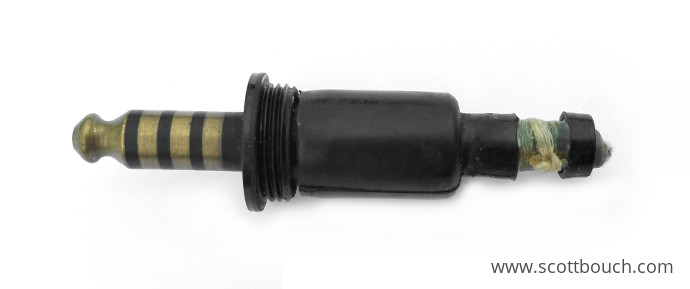British Aircrew 671-Type Plug /
"NATO" Plug
Stores Refs: 10H/18575, 10H/5935 or 10H/9466652 | NSN: 5935-99-946-6652
The most common conenctor used in the RAF and RN since the second world war for headsets and helmets to interface with aircraft. It mates with the NATO socket 626-Type.
The "NATO" plug and socket came about as a means of quick headset disconnection from the newly invented ejection seats. This requirement also saw much shorter helmet cables in use, and the mating "NATO" socket 626-Type located on the ejection seat closer to the occupant.
The helmets C*-Type Wired, D*-Type Wired, E*-Type Wired and their trpoicalised counterparts were the first helmets to be fitted with Type 671 plugs, using the telephone connector (cable harness) Type 2028 (normal) and Type 3511 (tropicalised). The earliest evidence I have found of the Type 671 "NATO" plug is 1947, see below.
There is a standard colour code for headset wiring, and the electrical contacts inside the connector have painted dots to indicate which contact is for which wire colour:
Red = TEL +
Blue = TEL - and microphone screen
Yellow = MIC +
Green = MIC -
Advertisments / Brochures
The conclusion of who manufactured these connectors was triggered by two things, firstly most have an inspectors stamp marked ASTL, secondly, I noticed that these connectors were very similar to British telephone connectors "plug 420" used in the GPO Plan 4 telephone system. So I researched telephones, and found a group of enthusiasts and historians, the Telecommunications Heritage Group who were amazingly helpful in this research. I owe them many thanks indeed.
Members of the THG pointed me in the direction of The Post Office Electrical Engineers' Journal, Vol 58, Part 2, July 1965 where this beautiful advert was located:
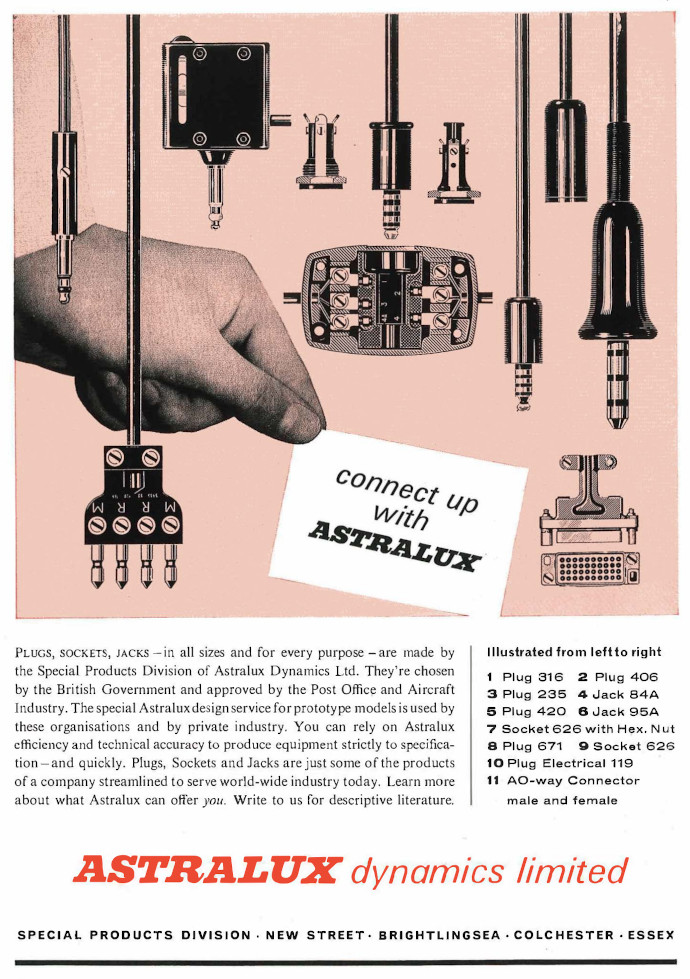
Service Photographs
Martin Baker Video, September 1947
This Martin Baker video clip (click here) and the below images taken from the video show the D*-Type Wired helmet in use during early ejection seat development, fitted with the telephone connector Type 2028.
The "NATO" plug and socket are referred to in the video as a "quick release device", this GIF created from the video shows why:
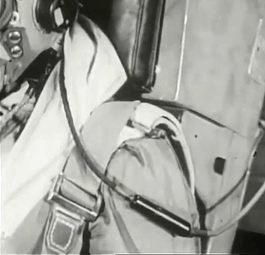
RAF / RN Resources
AP4288C, Volume 1, Section 6, Chapter 1, Paragraph 14 2 (AL24, June 1955)
Quote:Quick release connections
14. When the seat is ejected, the aircraft oxygen and intercom. services disengage automatically at the quick release connections shown in fig. 2.
AP4288C, Volume 1, Section 6, Chapter 1, Figure 2 (AL29, December 1955)
The AEA of the Glsoter Javelin from 1955 shows the quick release facilities of the ejection seat, the 671-Type "NATO" intercom plug being one of them, indicated to releaese upon leaving the seat.
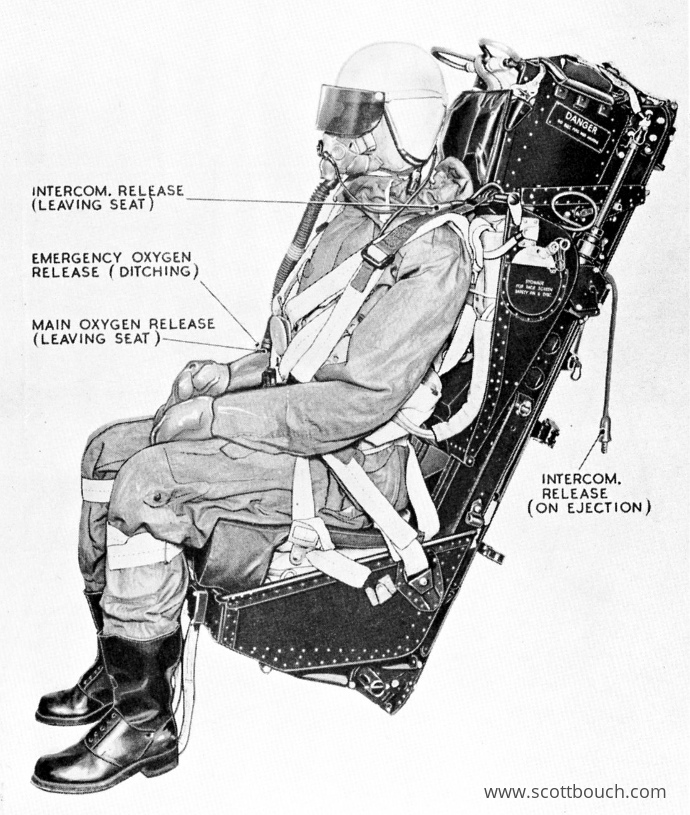
Exhibits
Type 671 NATO Plug, New, 1983
This image shows a new-in-packet Type 671 plug. It shows how it is provided with no strain relief or boot under the Nato Stock Number 5935-99-946-6652 (or Stores Ref. 10H/5935), meaning these additional components have to be ordered separately to suit the cable being used.
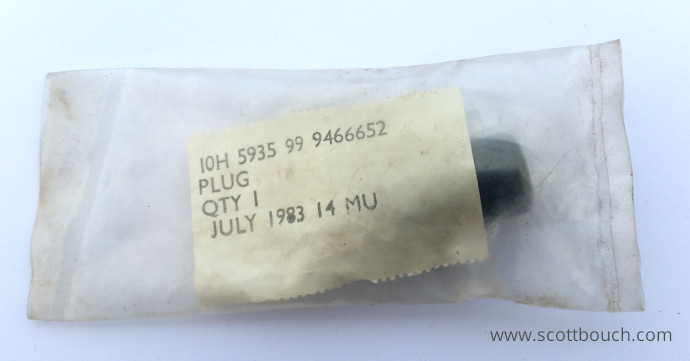
Type 671 NATO plug and Aluminium Strain Relief
A plug with aluminium cable strain relief, shown without rubber boot or cable fitted.
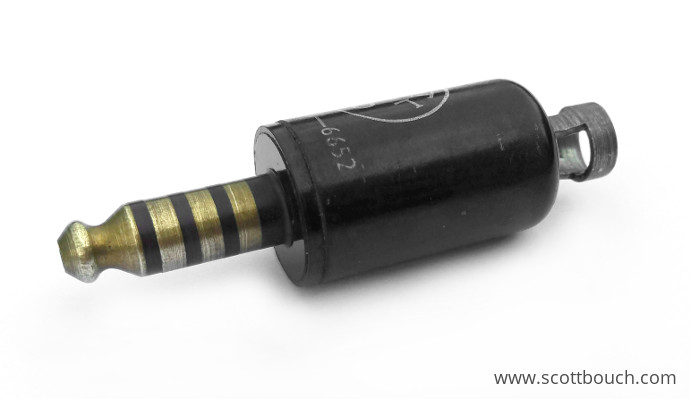
The same connector shown with back-shell removed, exposing the electrical contacts within. Thse contacts are for soldered joints to the headset harness. Channels are cast into the central spigot, where lashing cord is wrapped around the wires, affording some strain-relief to the soldered joints.
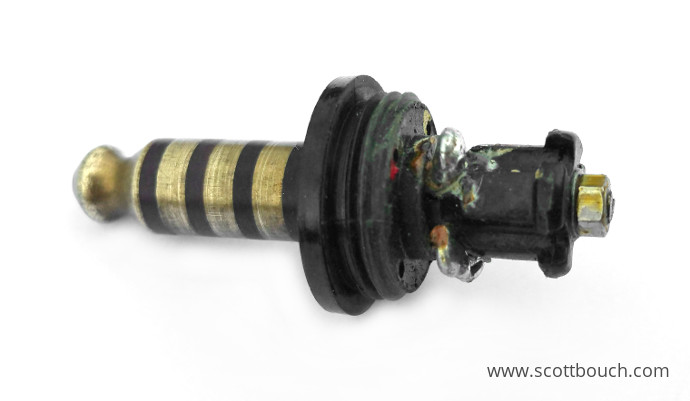
C*-Type Tropicalised Helmet
The earliest evidence I can find of the appearance of full rubber boots fitted to these plugs was a blue boot used on the blue wiring of the C*-Type Tropicalised helmet in the early 1950's.
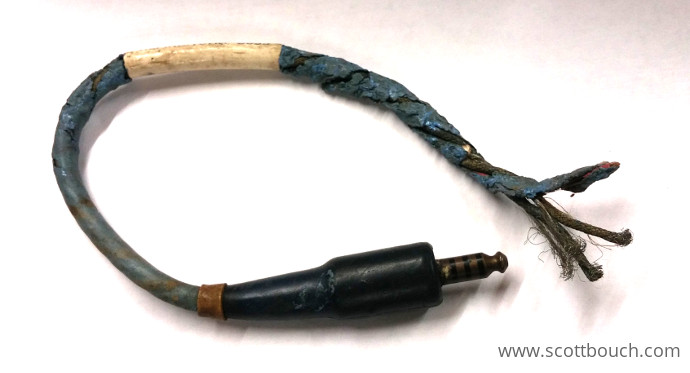
Mk4A Helmet
The headset of a Mk4A helmet with green rubber boot strain relief. Within the boot, there is space to accomodate the aluminium strain relief shown above.
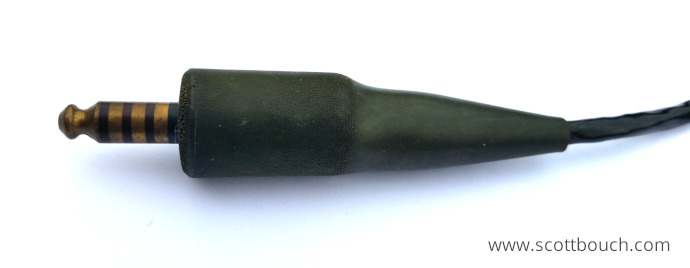
Airmed Airlite Headsets
An alternative type of inner cable strain relief is found inside connectors of Airmed Airlite headsets, it is a plastic sleeve that covers the wires soldered to the plug contacts, and exits the backshell for lashing much like the aluminium strain reliefs found on flying helmets.
